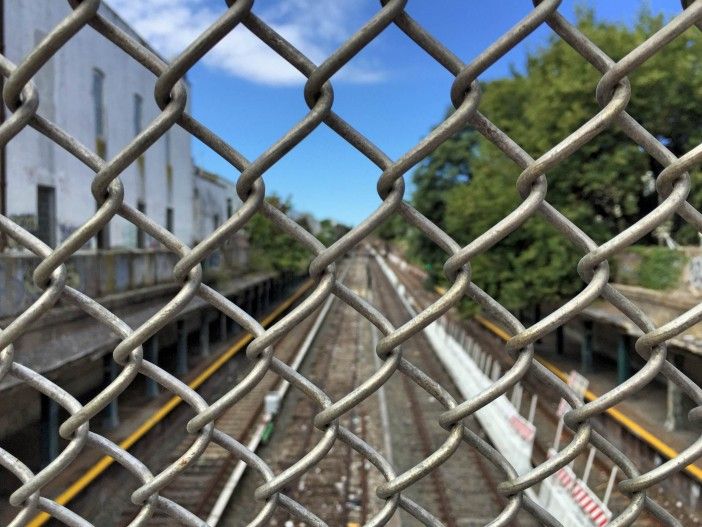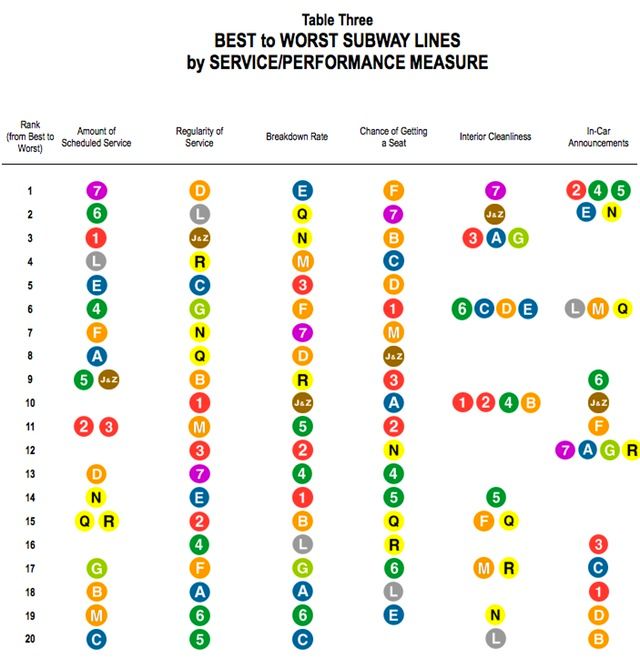Straphanger’s Report Card: Our Local Subway Lines, Ranked

The Straphanger’s Campaign rated the B and 5 line as the worst in New York City’s subway system in their annual State of the Subways Report Card — but that didn’t stop our local lines from making several of “worse of” lists.
The N line — along with the L — is unsurprisingly listed as having one of the dirtiest interiors, while the D train’s grade has tanked when it comes to in-car service announcements. While not hopeless, the F train’s score is also way down when it comes to regularity of service, and R train riders typically have to scramble to find a seat, according to the report.
The report, which can be viewed below, ranks 19 of the 20 subway lines. (The G line was not given a rating because the MTA lacked data on the number of subway riders for that line.) Using data from the MTA, taken from December 2013 to December 2014, the Straphangers Campaign evaluated train lines based on car cleanliness, available seats, amount of breakdowns, frequency and regularity of service and the quality of announcements in the cars.

Photo by Straphangers
Each category was weighted based on it’s importance to commuters, with the amount of service receiving the greatest priority while seat availability, cleanliness, and announcements given the least significance.
Meanwhile, the 7 line received the highest rating in the report, which caused some consternation among Queens riders, who noted that the study did not account for planned construction work. City Councilman Jimmy Van Bramer, who represents parts of western Queens, told AM New York that he didn’t think the report is “worth the paper it’s printed on.”
“The day to day reality for 7 train riders is a nightmare,” he said.
The Straphanger Campaign said the purpose of the report is to make information about train quality easily accessible to riders.They also argued the report provides greater transparency for the subway system and gives riders the information they need to win better service.
The report concluded that, overall, subway car breakdowns have increased over the previous year. Car cleanliness has not improved since last year’s report and the amount of “accurate and understandable” in-car announcements have worsened slightly.
Earlier this year, the MTA asked the city to chip in an extra $1.3 billion to address a $14 billion funding gap in its five-year capital construction plan, which goes towards the Second Avenue Subway line and improving the transit system’s aging infrastructure, the New York Times reports.
City Comptroller Scott Stringer called the request “incredible” after releasing a report showing New York City residents contributed $10.1 billion to the MTA in fiscal year 2014 through fares, tolls, taxes, and other subsidies, reports Crain’s. Meanwhile, the state, which controls the MTA, contributed only $603.5 million in fiscal year 2014.
[Additional reporting by Rachel Silberstein]




